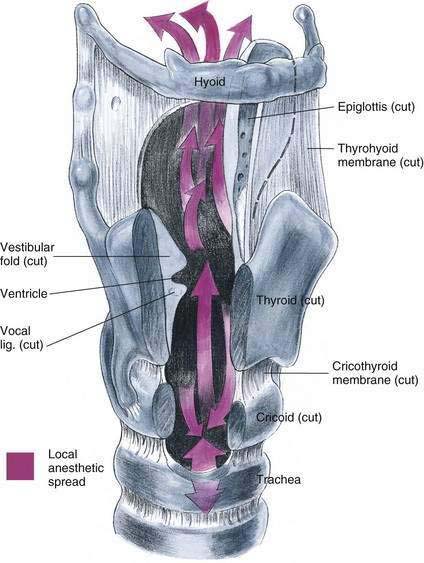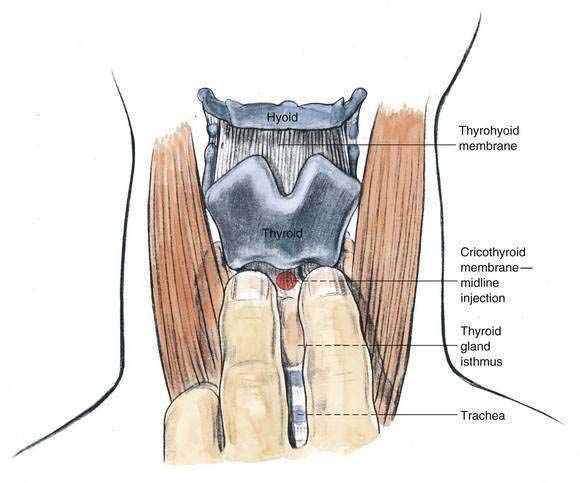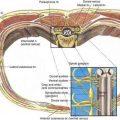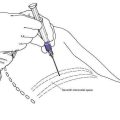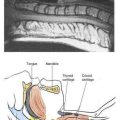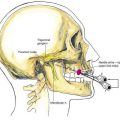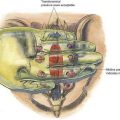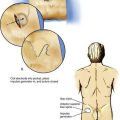30 Translaryngeal Block
Placement
Anatomy
Translaryngeal block is most useful in providing topical anesthesia to the laryngotracheal mucosa innervated by branches of the vagus nerve. Both surfaces of the epiglottis and laryngeal structures to the level of the vocal cords receive innervation through the internal branch of the superior laryngeal nerve, a branch of the vagus. The distal airway mucosa also receives innervation through the vagus nerve but through the recurrent laryngeal nerve. Translaryngeal injection of local anesthetic is helpful in providing topical anesthesia for both of these vagal branches because injection below the cords through the cricothyroid membrane results in solution’s being spread onto the tracheal structures and coughed onto the more superior laryngeal structures (Fig. 30-1).
Position
The patient should be in a supine position, with the pillow removed and the neck slightly extended. As illustrated in Figure 30-2, the anesthesiologist should be in position to place the index and third fingers in the space between the thyroid and the cricoid cartilages (cricothyroid membrane).

